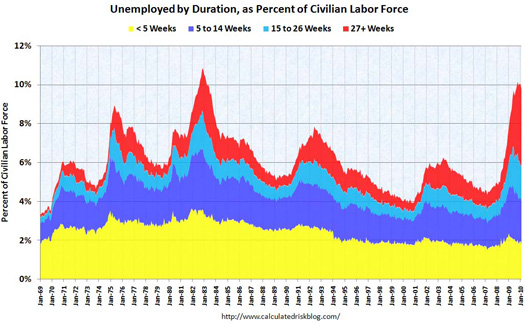
Free Exchange posted this chart emphasizing the challenge long-term unemployment poses in this recession. It seems to indicate that construction-based stimulus could be especially effective in reducing such unemployment, furthering the case for a stimulus program emphasizing the construction and repair of infrastructure.
But there’s just not that much room to cut unemployment by putting the short-term unemployed back to work in this latest recession. Only six percentage points of unemployment are attributable to those out of work less than six months. To get the unemployment rate down below, say, 7%, you have to take a big chunk out of long-term unemployment.
And that means putting back to work a lot of relatively low-skilled workers who were previously employed in construction, in manufacturing, and in retail and service industries. In an economic climate in which construction and personal consumption are likely to contribute very little to output growth for the next few years.
That’s a tall order. Not since the Depression has the American economy had to pull off anything like it.
Beyond the benefits which accrue to regions and economies from an infrastructure’s performance, their construction is an effective form of stimulus; during this recession, it would target a portion of the workforce having an especially difficult time finding jobs.

